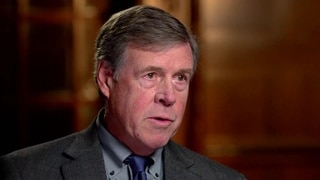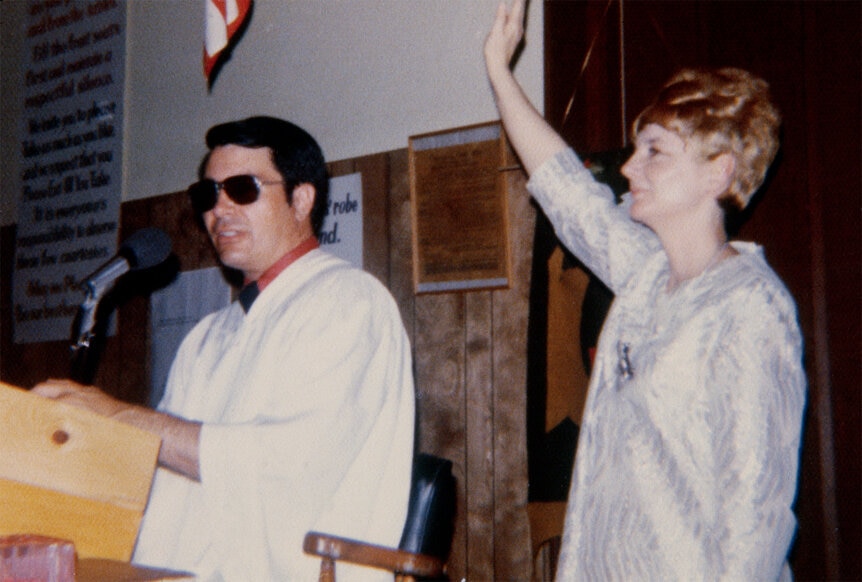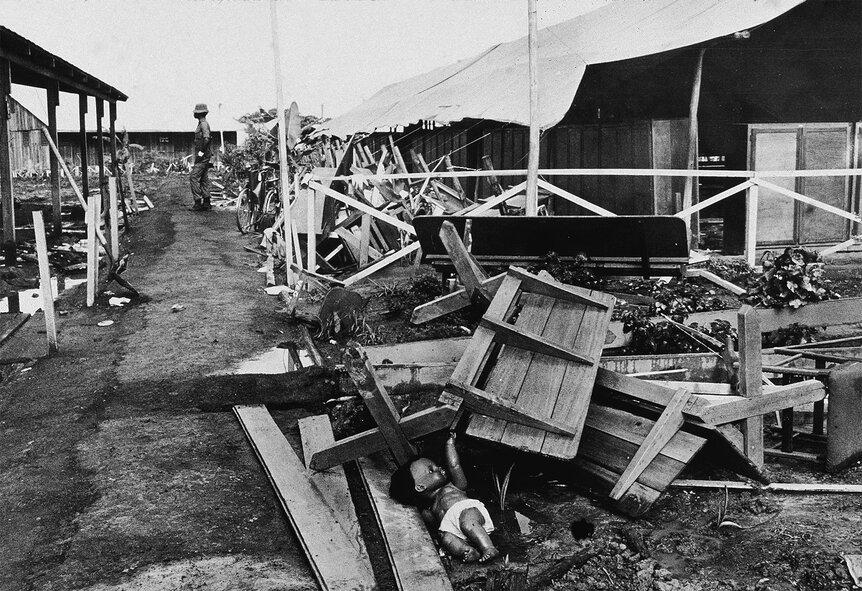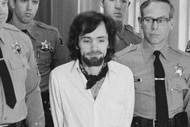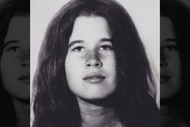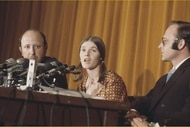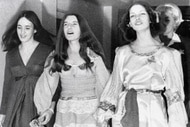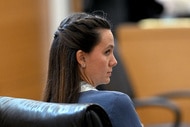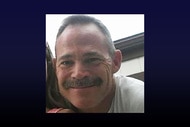Create a free profile to get unlimited access to exclusive videos, breaking news, sweepstakes, and more!
Reporters Recount Jonestown Mass Suicide and Deadly Ambush: "Out of a Horror Movie"
Congressman Leo Ryan's visit to the South American compound, known as Jonestown, with a group of media in tow, ultimately led to shocking violence and death.
Congressman Leo Ryan and a small news crew went to Guyana in the Fall of 1978 to investigate concerns about Reverend Jim Jones and the religious compound he called Jonestown.
Days later, 918 people would be dead, including Jones and more than 900 of his followers, according to Dateline: Secrets Uncovered.
The violence began after Ryan and four others were shot to death by a group of Jones’ followers as they tried to help others flee to safety. Just hours later, Jones, fearing that authorities would soon arrive to destroy Jonestown, chillingly instructed his devoted followers to drink a fruity drink laced with cyanide.
“We didn’t commit suicide,” Jones said in audio later recovered from the compound. “We committed an act of revolutionary suicide, protesting the conditions of an inhumane world.”
Don't miss the latest in true crime:
Dirty Dancing Actress Shot Execution Style in 2001 Carnegie Deli Murders
Wife Wakes Up Covered In Blood After Husband Is Shot In His Sleep — Is She A Suspect Or Victim?
Texas Prosecutors Reexamine Montana Reporter’s Senseless and "Chaotic" 2002 Murder
The surviving reporters and news crew who made the deadly trek into the South American jungle recounted the horror and violence that ultimately led to the mass suicide and murder of hundreds of Americans in Dateline: Secrets Uncovered.
Why was Jim Jones famous?
Jones was once a respected preacher in San Francisco, who spoke in the late 1960s of racial harmony and communal living.
His People’s Temple offered drug counseling, helped the poor and operated a group of elderly homes. But Jones also believed he was Jesus Christ reincarnated and claimed to be able to perform miracles, like healing the sick.
“Jones had established a reputation as a faith healer, as someone who could remove cancers from people’s bodies and much of this was of course fakery, but it did bring people through the door,” wire service reporter Tim Reiterman recalled.
Jones’ bold claims soon invited media scrutiny and Reiterman and others heard from former members that the preacher often beat or humiliated his followers. But just as an investigation into his activities was heating up, Jones relocated with close to 1,000 followers to the jungle of Guyana to create his own compound.
The Founding of Jonestown
Jones claimed the community, known as Jonestown, was a tropical paradise where his followers could live their best life in harmony with those around them.
However, there were also rumors that Jones forced his followers to surrender their passports, essentially holding them against their will.
Ryan, along with a small group of media including renowned NBC reporter Don Harris, traveled to Guyana in November of 1978 to investigate the claims.
Although they were initially turned away by Jones, the charismatic leader invited the group into the compound on Friday, Nov. 17, 1978 for a night of singing and dancing.
“You can see [on] the video tape that people are happy, they were welcoming us to come in,” sound tech Steve Sung told Dateline Correspondent Josh Mankiewicz.
RELATED: How 'The Vampire Clan' Went From Teen Blood Rituals To Killing Parents
Yet, despite the jovial atmosphere, there was an undercurrent of something more sinister.
“When we met him the first day there in Jonestown he struck me as just evil personified and we were almost sure that he was on drugs,” reporter Ron Javers recalled.
As the party continued, one follower passed a note to Harris begging for his help to get out of Jonestown.
The Moments Before
The next day, Ryan and the members of the media returned and offered to help anyone who wanted to leave the community.
“Word started to get out that people were leaving and then more people wanted to leave,” Ryan’s congressional aide Jackie Speier recalled.
Those who wanted to leave were loaded up and taken to a nearby airstrip. Meanwhile, Ryan stayed behind to take care of some last minute logistics amid the growing tension. A temple member attacked Ryan, ripping his shirt and holding a knife to his throat.
Ryan managed to flee unharmed and recounted the violence during an impromptu press conference at the air strip.
“Suddenly, the knife was around my neck and I was — I was in danger,” Ryan said in his final interview.
Just as Harris was completing the interview, a small group of Jones followers arrived, pulled out guns, and began to fire at the group.
As cameraman Bob Brown’s tape rolled, bullets began to fly. One hit Brown in the leg.
“I said, ‘don’t get up.' He did and that’s when he drew attention,” Sung recalled. “They blew his head off.”
Ryan and Speier dove for cover underneath an airplane, but it offered little protection. According to Speier, Ryan was shot “45 times,” while she took a shot to her leg. Other injured reporters dove into the jungle. When the gunfire stopped, Harris, Ryan, Brown, photographer Greg Robinson, and one of the Jonestown defectors were dead and 10 others were injured.
The two planes took off, leaving the wounded to fend for themselves until the next morning.
“I should have died on that airstrip,” Speier said.”I should have, but it was not part of the plan.”
With the Congressman dead, Jones knew it wouldn’t be long before the Guyanese army, or GDF, would descend on the compound. He told his followers in haunting audio recordings that the officials would torture the children and elderly and claimed the only solution was to take their own lives.
RELATED: California Cult Attempts To Murder Attorney With Deadly Rattlesnake Attack
“Please get it, before it’s too late. The GDF’ll be here I tell you. Get movin’ get movin’ get movin’,” he said. “Don’t be afraid to die.”
Those who managed to escape, would later say that Jones instructed the children to take the poison first. If anyone tried to refuse the deadly drink, they were forced by others holding cross bows.
How many died at Jonestown?
In total, 918 people were either killed or committed suicide under Jones' direction. Jones and his nurse died from gunshot wounds, which were likely self-inflicted.
The bodies were later discovered by the U.S. Army and NBC Correspondent Fred Frances, who had hitched a ride on the military helicopter.
“We could see this massive quilt. We had no idea what we were looking at and as the helicopter made another pass and we got closer, the stench came up even with the rotor wash into the plane and then we realized what we were looking at were hundreds of bodies down below us,” Frances recalled. “It was something out of a horror movie.”
Frances said he was “stunned” and “emotionally blasted” by seeing the bodies of men, women, and children stacked on top of each other.
The Aftermath
In the aftermath of the tragedy, it took weeks for the military to bring the bodies back to the United States.
Those who survived moved on with their lives, but they continue to be haunted by the shocking tragedy that claimed the lives of so many..
“That smell even though I couldn’t resurrect it, it’s with me all the time,” Frances said. “I mean it was so powerful.”

